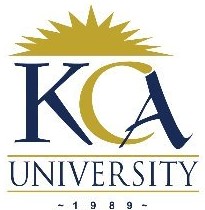
UNIVERSITY EXAMINATIONS: 2011/2012
YEAR 2 EXAMINATION FOR THE BACHELOR OF SCIENCE IN
INFORMATION TECHNOLOGY
BIT 2202 INFORMATION SYSTEM DEVELOPMENT
DATE: APRIL 2012 TIME: 2 HOURS
INSTRUCTIONS: Answer Question One and Any other Two Questions
QUESTION ONE (Compulsory)
a) Explain the benefits of off-the-shelf software packages offer to organizations (4 Marks)
b) Discuss the basic tenets and main principles of the socio-technical approach to information systems
development (6 Marks)
c) Describe the approaches to addressing competitive effectiveness using IS/IT (4 Marks)
d) Discuss the role of people in ISD (4 Marks)
e) Describe Mumford’s three levels of user participation (3 Marks)
f) Discuss two ways in which ICT-enabled organizational change can happen in an organization.
(4 Marks)
g) Discuss alternative ways of addressing resistance to change manifested in information systems
projects. (5 Marks)
QUESTION TWO
a)Describe the business functions an Enterprise Resource Planning (ERP) system support (6 Marks)
b)Write a short report for a senior manager explaining the expected benefits of investing in a new
Customer Relationship Management (CRM) system that will link to a number of other business
systems currently in use. (10 Marks)
c)For what type of systems development projects would you choose NOT to use a life cycle approach?
(4 Marks)
QUESTION THREE
a) Object-oriented software engineering has become very popular. With the help of an example define
the terms object, encapsulation, and polymorphism. (6Marks)
b) Explain the difference between requirements elicitation and requirements specification. (4 Marks)
c) Providing definitions, advantages and disadvantages of each compare and contrast End-user
development and out sourcing (10 Marks)
QUESTION FOUR
Explain and compare the implications of choosing Object Oriented Systems Development, as opposed
to Structured Systems Development, for the following challenges in developing software. Your answer
should include discussion of the advantages and disadvantages of each approach for each challenge.
a)Designing the software. (5 Marks)
b) Producing the software code. (5 Marks)
c) Testing the software product. (5 Marks)
d) Documenting the software process. (5 Marks)
QUESTION FIVE
Computer Aided Software Engineering (CASE) tools are commonly used to support the automation of
the software engineering process.
a)Describe, using examples, three key software engineering activities which may be supported by
CASE tools and explain how a team of software engineers may benefit from the use of CASE
tools. (6 Marks)
b) It is frequently argued that the use of ‘integrated CASE tools’ may improve the overall software
engineering process. Explain what is meant by ‘integrated CASE tools’ and in what way it may
improve the overall engineering process. (6 Marks)
c) ‘Although the automation of the software engineering process seems like a desirable concept,
the use of CASE tools will increasingly lead to the loss of jobs for software engineers.’
Discuss. (8 Marks)
